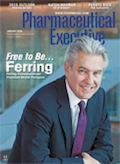Country Report: Puerto Rico
Confronted by a debt crisis and a stagnating economy, the government of Puerto Rico, the world’s fifth-largest pharma manufacturing producer, has turned to the healthcare industry-and life sciences in particular-for new sources of economic growth.
This sponsored supplement was produced by Focus Reports.
Project Director: Cameron Rochette
Project Coordinator: Carla Verdera Mateu
Contributors: Alison Mowat, Ariana Rodrigues, Lisa Diericks
Report Publishers: Diana Viola, Julie Avena
For exclusive interviews and more info, please log onto www.pharmaboardroom.com or write to contact@focusreports.net
Photo credits: Flora de Puerto Rico, Ángel Botello Barros (1946).
Oil and gold leaves on masonite.
Courtesy of Museo de Arte de Puerto Rico.
Made in Puerto Rico
Puerto Rico covers a small area – if it were independent it would be only the 162nd largest country in the world – but when it comes to pharmaceutical manufacturing, it is the fifth largest territory on the planet. Its preeminence in pharmaceuticals has been hard won and but for the last four decades, the industry has generated about a quarter of Puerto Rico's entire income.
But new threats have emerged in recent years: a debt crisis and a stagnating economy. In response, the local government has looked to industry – and life sciences in particular – for new sources of economic growth.

Antonio Medina Comas, executive director of the Puerto Rico Industrial Development Company (PRIDCO), has been tasked with the monumental responsibility of attracting foreign investment to the "Enchanted Island."
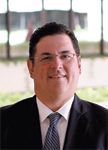
Antonio Medina Comas, executive director, PRIDCO
Medina and his team work to ensure that foreign businesses recognize the benefits Puerto Rico offers. The island, which has consistently been a major attraction for foreign corporations looking to benefit from its tax incentives, is home to the production sites of many industries, including life sciences, aerospace, automotive, electronics and IT. 48 percent of Puerto Rico's GDP is generated from manufacturing, making this particular sector the largest source of income in the territory today.

Carlos Rivera, president, PRMA
In the "Rum Room" at PRIDCO's headquarters, Medina eagerly describes how in just the last couple of years, five new pharmaceutical companies have come to the country, including Sanofi, Neolpharma, Romark Laboratories, the American Industrial Acquisition Corporation, and Allergan. "Puerto Rico is a high quality, high technology and high regulatory market where you can work under the US flag and under US intellectual property protection," he explains, "while simultaneously receiving the benefits of working in a low tax rate jurisdiction and achieving long-term deferral."
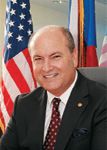
Jaime García, former executive director, PRMA
"The life sciences industry is the workhorse of Puerto Rico's economy, still representing 25 percent of GDP," continues Medina. "Some of the largest life sciences companies operate in Puerto Rico in both commercial and manufacturing functions as well as R&D. We have significant breadth among fields like small and large molecules, medical devices and agricultural biotechnology, which has shown tremendous growth over the last few years. Puerto Rico continues to be a leader worldwide in life science manufacturing. PRIDCO's focus is first and foremost to protect the industrial base and ensure that companies here continue to thrive and achieve expansion either through new products or facilities, and to bring new companies and segments to Puerto Rico."
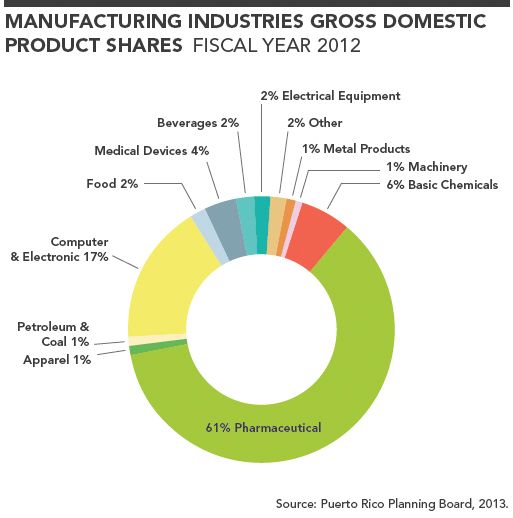
Manufacturing Industries Gross Domestic Product Shares Fiscal Year 2012
Carlos Rivera, president of PRMA and vice president and general manager of Edwards Lifesciences in Puerto Rico, emphasizes that for every direct manufacturing job, three indirect jobs are generated in Puerto Rico, and one job in the US. "This is especially important to communicate to politicians in Washington, which PRMA has been doing consistently," he remarks. "PRMA have been knocking on every Congressman and Congresswoman's door, reminding and educating this new generation of politicians. This island became a manufacturing powerhouse between the 1960s and 1990s. Now we have a new generation in Congress that might not remember the importance of Puerto Rico, and this association wants to ensure that our politicians know how important we are for the US economy. If our manufacturing suffers, that has broad implications for the US. While Puerto Rico's economy only amounts to USD 105 billion, it is bigger than many countries in Latin America and thus has important influence around the world."
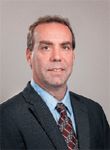
Bob Maroney, president, PIA
And clearly something's working. Puerto Rico's total manufacturing sector remains dominated by the pharmaceutical sector; 61 percent of its total manufacturing is in pharmaceuticals. In just the last couple of years, many of the companies that have operated in Puerto Rico for decades continue to demonstrate their commitment to the country. Puerto Rico's contribution to the manufacturing of medicines for the global market is paramount. As an example, 75 percent of Abbvie's Humira, the world's top-selling drug in 2014, is manufactured in Puerto Rico. AstraZeneca's top-selling drug Crestor is made exclusively in Puerto Rico.
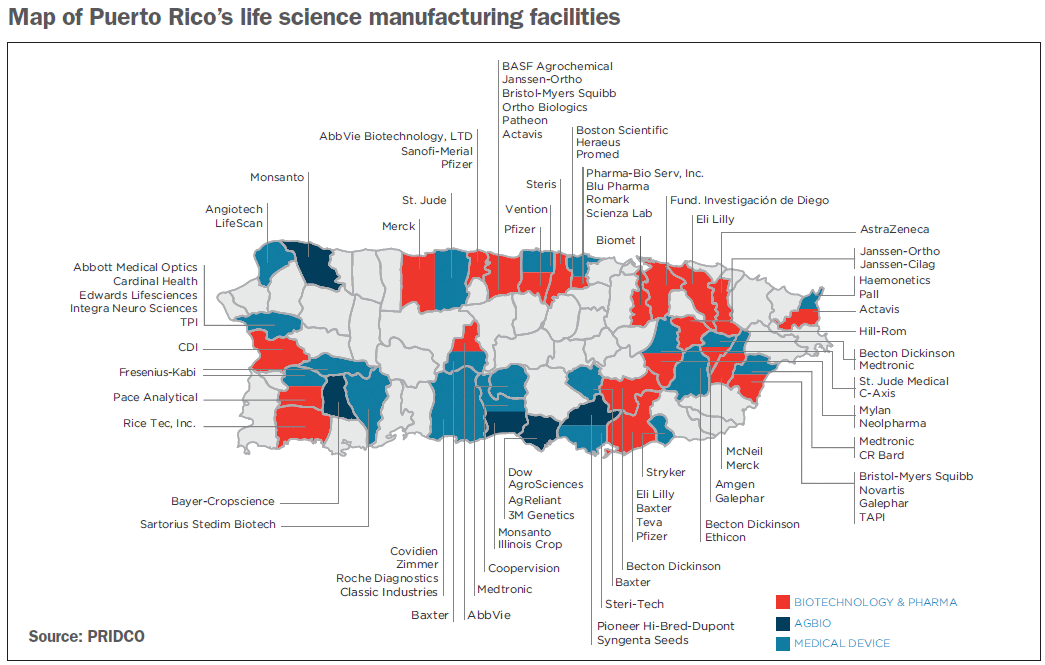
Map of Puerto Rico's life science manufacturing facilities
UNCLE SAM: HERE TODAY, GONE TOMORROW
The driving force behind much of the interest in Puerto Rico as an alternative for manufacturing was Section 936 of the Federal Tax Code, which exempted corporations from paying federal tax on income earned in Puerto Rico. Consequently, just about every major life science company invested in Puerto Rico between the 1970s and 1990s. In 1996, Section 936 was repealed with a ten-year phase out period. The removal of this exemption caused an outcry at the time, and many in Puerto Rico today still describe the impact of this situation using a variety of colorful metaphors, from "tidal wave" to "heart attack".

Eduardo Negrón-Navas, attorney-at-law, Fiddler, González & Rodríguez
Indeed, many companies did suffer. "The removal of Section 936 provoked many pharmaceutical companies doing business in Puerto Rico to move abroad, especially to Ireland and Singapore, two of our most important competitors," recalls Jaime García, former executive director of the Puerto Rico Manufacturers Association (PRMA). "In 1996, 150,000 employees worked in the Puerto Rican pharmaceutical industry, and after the repeal and phase-out, only 80,000 remained."
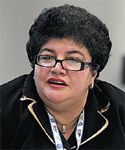
Lucy Crespo, CEO, Puerto Rico Science, Technology and Research Trust
However, there is a new spirit of optimism on the island. "While Section 936 tax benefits have expired, the Puerto Rican government remains focused on ensuring that people are well-incentivized to do business here," comments Bob Maroney, president of the Puerto Rico Pharmaceutical Industry Association (PIA). "This is important not only for existing companies but also for new companies coming here."
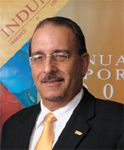
Iván Lugo, executive director, INDUNIV
Eduardo Negrón-Navas, attorney-at-law at local firm Fiddler, González & Rodríguez explains that at both the federal and local level, benefits for companies still exist. "The Economic Incentives for the Development of Puerto Rico Act of 2008 provides tax exemptions and tax credits to businesses engaged in eligible activities in Puerto Rico," he notes, "while IRC Section 901 provides for the U.S. tax deferral of income earned in Puerto Rico, which is considered as a foreign tax jurisdiction. The combination of these two economic incentives makes Puerto Rico an attractive place to site manufacturing facilities."

Verónica Cruz, executive vice president and COO, ReComS Group
R&D IN PUERTO RICO: A GROWING PALM TREE
Puerto Rico is starting to move beyond manufacturing and towards greater R&D activity. Puerto Rico's Cardiovascular and Cancer Centers are considered world-class and leaders in the region. In 2013, the University of Puerto Rico invested USD 72 million in a 153,000 square foot Molecular Sciences Building (MSB) that aims to accelerate the licensing and commercialization of patents, and has already sparked interest among a number of major pharmaceutical companies. The research center Fundación de Investigación houses the only Phase I clinical trial unit in the Caribbean and played a critical role in the development of Sovaldi, and has also conducted studies for many of the biggest names in the industry.
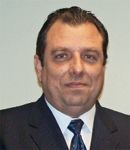
Tom Forrester, president, CRB Caribe
Mobilizing much of the growth in the research area is the Puerto Rico Science, Technology and Research Trust, an autonomous entity designed to help stimulate innovation and provide funding for infrastructure and projects in the area of technology across a number of sectors, and the life sciences are no exception. Lucy Crespo, a former executive at Hewlett Packard, was named director of the Trust in March 2015 and has been working non-stop to bring more capital funding to the island, including partial funding for both the MSB and the Cancer Center. Both buildings are part of a 72-acre "Knowledge Corridor" that the Trust is building in the coming years to support the promulgation of innovation across 11 hospitals.
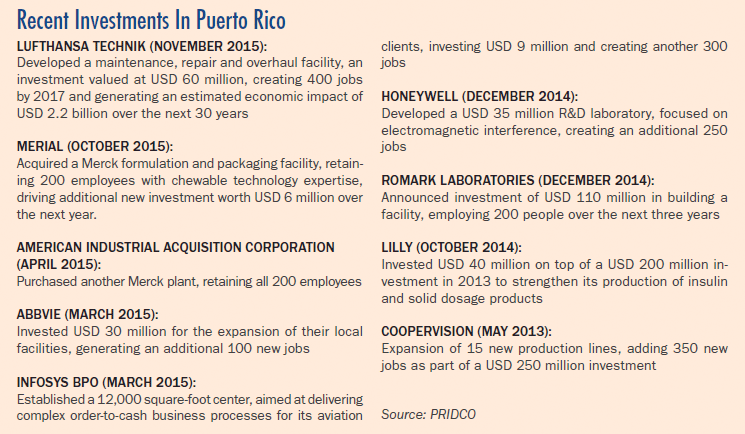
Recent Investments In Puerto Rico
The Trust also recently received approval to work with every clinical trial unit in the territory. "From this, we formulated a unique value proposition to work together in one office to promote Puerto Rico as a one-site-solution for clinical trials," explains Crespo. "STRT is going to facilitate the process and infrastructure to ensure that we can make those trials and innovative treatments available to Puerto Ricans."
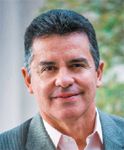
Ricardo Zayas, senior vice president global manufacturing, BMS
How will all of this activity come to fruition in a realistic way? "We need to have highly skilled people, the best and latest technology and be able to develop, register and engage in technology transfer to launch products as fast as possible, says Iván Lugo, executive director of the non-profit organization Industry University Research Center (INDUNIV), which aims to solidify the link between Puerto Rican industry, academia and government. "INDUNIV has appointed itself the mission not only to promote manufacturing, but the whole value chain. As a result, we have supported the construction of innovation centers bringing together academia and the private sector for Phase II development. If we formulate and develop the product here, it is also very likely that its manufacturing and launch will also take place on the island."

Lourdes De Cárdenas, vice-president of operations Latin America, Stryker
"Puerto Rico offers plenty of opportunities for both R&D and manufacturing, however it is important to identify how it can better capitalize corporations' needs for net low cost," says Dante Castillo, managing director of Boston-based blood management company Haemonetics' Puerto Rican affiliate. "Puerto Rico holds an extensive combination of talent, knowledge and maturity in the manufacturing environment." But it also needs R&D talents as well, he says. Additionally, "the tax incentives program for R&D is really good and this is also available for services and manufacturing."
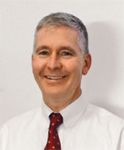
Andrew Wirths, associate vice president & general manager, Merck Puerto Rico Pharmaceutical Operations
Where some see optimism, others exercise a degree of caution. Ireland and Singapore, Puerto Rico's two biggest competitors for life sciences manufacturing, may have gained the upper hand in terms of R&D. Verónica Cruz, executive vice president and COO of local consulting firm ReComS Group, notes that R&D is very different to manufacturing and while Singapore has a strong pipeline of scientists, Puerto Rico has a strong pipeline of manufacturers. "However, I strongly believe that Puerto Rico needs to think about what it really wants to do," warns Cruz. "Just because Ireland is really successful in R&D, is that a reason to try to compete with them in that area? We have a tremendous footprint here of idle capacity and globally approved sites; we ought to put that to work and bring in other kinds of products. There is no reason why we cannot start building other skills in the long-term, but in the meantime Puerto Rico should be exploiting its fortés rather than trying to be good at what someone else is already great at."
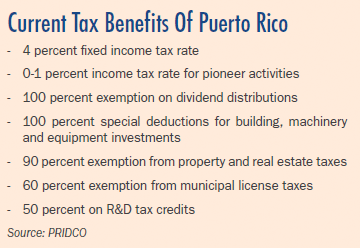
Current Tax Benefits Of Puerto Rico
But staying up-to-date in the manufacturing arena may also pose a problem. "Ireland and Singapore began in the following generation of pharmaceutical development which was less labor-intensive and more automation-driven," recalls Cruz. "In comparison, we have not moved quickly enough to reach that technological level. The challenge we face is that retrofitting halts production and is more difficult than building from the ground up."
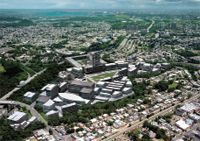
An artist's rendition of San Juan's future "Science City"
EVOLVING THE MANUFACTURING MODEL: LESS IS MORE
Automation and consolidation have affected pharmaceutical companies worldwide. Puerto Rico has benefited from the trend towards lower volume, higher value products which often use the smaller plants Puerto Rico offers. These trends point to a reorientation of strategy for manufacturing in Puerto Rico.

Top Facilities in Puerto Rico
The frantic rush to create an automation-driven manufacturing environment, coupled with the impact of global consolidation is being felt throughout the island. "In terms of technology, everything is moving towards being more automated," says Tom Forrester, president of engineering and architectural design firm CRB Caribe. "We are seeing a move in Puerto Rico towards biopharmaceutical products and processes in the oral solid dosage area finishing and packaging and less in the APIs."
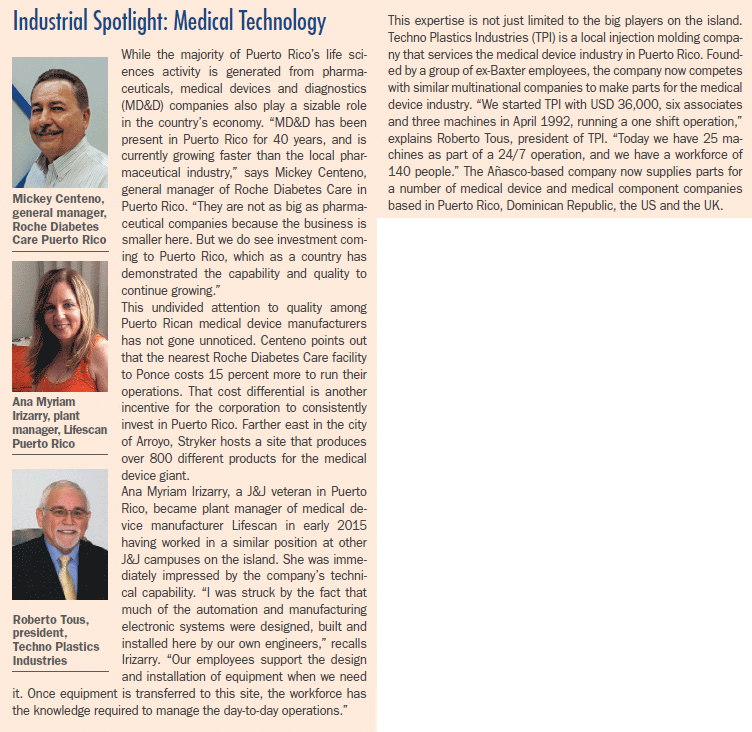
Industrial Spotlight: Medical Technology
Ricardo Zayas, senior vice president of global pharmaceutical manufacturing at Bristol-Myers Squibb (BMS), says that product volume and technology trends have become an increasingly important part in the future of pharmaceutical manufacturing networks and individual facilities. "Consolidation has created a significant amount of excess capacity in small molecule manufacturing around the world, prompting companies to repurpose, close or sell their facilities," emphasizes Zayas. "Companies focused on innovative science are moving towards lower volume, higher value products. The challenge is that many plants were not designed for this model and will have to redefine their mission, strategy and operating model. Smaller plants that optimize space utilization are better equipped to handle changing demands of the industry. This is especially true in Puerto Rico where energy costs are relatively high."

Ileana Quiñones, president and general manager, iPR-AstraZeneca
In addition to the "smaller is better" mantra, according to Zayas the convergence of development with production makes great sense. "First launching in market, then a rapid deployment to target markets around the world can help get medications to the patients who need them," he stresses. "The primary focus during the development-to-launch process in terms of lead time has typically been the clinical and regulatory processes, but in today's world, any time the manufacturing and development teams can work together to reduce the development-to-launch cycle time provides a significant opportunity to accelerate timelines."

Yanira Torrellas, president, Quality Consulting Group
Lourdes de Cárdenas, vice president of operations Latin America for Stryker, notes that the intellectual value that Puerto Rican engineers adds makes the island particularly productive: "An increase in production volumes does not necessarily require the addition of many people because processes are highly technological and automated; thus you can absorb increases or decreases in demand easily," she says. One of Stryker Puerto Rico's goals is to continue integrating automation into its processes. "This poses a certain degree of difficulty because of the variety of products we manufacture but moreover our approach to automation is not necessarily automating a process completely," explains de Cárdenas. "It is automating unit operations that repeat themselves among different processes. Once those technologies are perfected you can reproduce them across many different lines. Consequently, demand can be easily managed.

Janssen: Manufacturing Goliath
Merck is no stranger to these trends. In the last two years, the company sold two of its three plants in Puerto Rico and is redefining its strategy at the remaining plant in Las Piedras. This plant has undergone a USD 100 million investment since 2011 focused on transforming the site from a basic supply site to a commercialization site, which CRB Caribe played a significant role in designing.

Osvaldo Carlo, president, ReComS
"A commercialization site has the responsibility of shepherding new chemical entities (NCEs) from proof-of-concept to commercialization in the marketplace - which is a far more dynamic objective," remarks Andrew Wirths, associate vice president and general manager of Merck's Puerto Rico pharmaceutical operations. "Taking a plant site with five products producing one billion tablets for many years and adding several more products with new launches means an increase in capability, speed, cadence and cost competitiveness. We get really involved at the Phase IIb level, in terms of scaling it up, supplying clinical, and going full-scale commercial depending on the forecast."
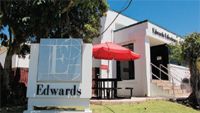
Edwards Lifesciences facility in Añasco
Merck's facility in Las Piedras obtained a commercialization certification in part because the facility itself was suited to the change in mission. "With non-sterile oral dosage, powders are blended and granulated and pressed into tablets," explains Wirths. "It is simpler in some ways to the large molecule space, but we have consolidated commercialization activities here, de-risking the business by putting all the MKs in Puerto Rico from a cost perspective. I do not have to recapitalize because I have a very flexible facility where I can make different drugs with different technology platforms embedded here. If a new product does not succeed, I do not lose that much."

Pharma-Bio Serv: A Model To Follow
A GENERATION OF FDA EXPERIENCE
Puerto Rico has many features that make it an attractive place to invest in manufacturing – a US jurisdiction, an FDA regulated environment, and competitive tax breaks. But ask any Puerto Rican and they will tell you that what really sets them apart is their 50+ years of experience in the life science sector. Many pharmaceutical and medical device companies have been operating in Puerto Rico for decades. At first most facilities were run by American plant managers repatriated to the island, but nowadays they are more likely to be managed by Puerto Ricans who have been in the game for years.
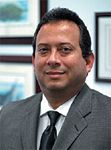
Enrique Alejandro, director/team leader finance, Pfizer Puerto Rico
"Puerto Rico is more competitive as a consequence of learning to transform itself from a US supplier to a global supplier, especially given the importance of the rise of emerging markets," explains Ileana Quiñones, president and general manager at iPR-AstraZeneca. As these emerging markets tend to offer cheaper high-quality labor, the name of the game in Puerto Rico has been learning to demonstrate that the quality of manufacturers located on the island truly is one of the best worldwide, as a US jurisdiction following FDA regulations. Consequently, Puerto Rico has become a manufacturing hub for global exports, rather than simply focused on the US as it had in past decades. "Here at iPR-AstraZeneca," Quiñones remarks, "we have been developing expertise to work with different regulatory agencies, markets, and other stakeholders throughout the globe."
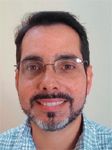
José Rullán, president, Invision Engineering
"We have a top notch labor force-hard workers, dedicated, committed and intelligent-and that is Puerto Rico's number one asset in the manufacturing sector. It continues to be one of the main reasons companies continue operating locally and are drawn to the island," says Yanira Torrellas, presidentof local firm Quality Consulting Group. "The industry relies on the knowledge and experience of its people, and with our geographic location and US territory status, Puerto Rico becomes very important. Puerto Rico's life science industry is governed by the FDA, so you can manage products in Ireland and Singapore but cannot necessarily export them to all US territories like this country can. That differentiation allows us to continue being competitive."
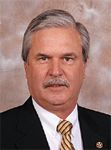
Gustavo Hermida, president, CIC Construction Group
Torrellas says that while other parts of the world offer competitive manufacturing of pharmaceuticals and medical devices, Puerto Rico does it better. "Companies in other regions know how to manufacture, but doing it according to the FDA is markedly different. Puerto Rico has investigators that came from local plants who know and are used to working in manufacturing. Those investigators may have higher expectations compared to investigators in other parts of the world. They have probably not been exposed to that experience even though the regulations are the same. We know that in this kind of industry there are some practices, while not written down, that are the expectations of the FDA (cGMP). This attention to detail is part of many Puerto Ricans' DNA in terms of expertise."
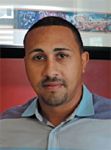
Manuel De La Cruz, president, M&N Electronics
NO CHOICE BUT TO BE THE BEST
"Due to the concentration of life science companies in Puerto Rico, the office of the FDA is very aggressive in their enforcement here," says Osvaldo Carlo, president of ReComS. "Compared with other jurisdictions with a limited number of pharmaceutical and medical device companies, in terms of geographical area and population, Puerto Rico has substantial presence from the federal government. The government engages in monthly enforcement actions, inspections or auditing of many companies in Puerto Rico. This makes sense given that Puerto Rico produces such a large amount of drugs and devices that are shipped to the US and other jurisdictions." Beyond that, Puerto Rico serves as a convenient gateway for Latin American healthcare companies looking to bring their products to the US, for which ReComS provides ample expertise.

Andy Vivoni, business development manager, Steri-Tech
Carlo recognizes that there's no such thing as a small investigation in Puerto Rico. "Comparing Puerto Rico with other US jurisdictions, we have to be at the top in terms of compliance. Locally, Puerto Rico has developed formidable expertise. When you have a large concentration of companies as is the case in Puerto Rico, even a couple of cases have national impact. An investigation initiated by the FDA would impact a product that is distributed all around the US."

Did you know?
"Puerto Rico has been one of the biggest hubs of pharmaceutical manufacturing for the last 40 years," says Enrique Alejandro, director and team leader finance at Pfizer Puerto Rico. "Therefore there is a strong culture of compliance spanning two generations. Through training and development, we have worked that culture into our facilities, so everyone understands why quality and compliance are so important to our patients. We need to keep building on this to maintain it as one of our strengths."

Edgar Torres, president, Escalate Sciences
Alejandro articulates that a number of facilities have many second generation colleagues. "They are the children of employees who worked in the industry in the early nineties and saw economic growth and social development in their communities as a result of their jobs," he remarks.
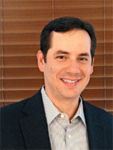
Omar Muñiz, president, ShareTech Group
"The pharmaceutical industry has a significant impact on the economy of Puerto Rico in terms of export and employment," continues Alejandro. "Major consolidations bring with them network rationalizations, and that has impact on the number of jobs in the island. However, if the consolidations provide stability for the plants that remain and these maintain strategic roles that are bigger than before, that is good for Puerto Rico."

Yoel Rivera, president, Ultimate Solutions Corp
SUPPORT FOR LIFE SCIENCE IS BROUGHT TO YOU BY...
It's not just the Puerto Rican multinational life science companies that impress. "We carry this enormous sense of pride," explains José Rullán, president of local automation solutions provider Invision Engineering, which specializes in efficacy and productivity. "We want to keep the pharmaceutical industry alive in Puerto Rico. We still want to be competitive worldwide. While Ireland and Singapore used our model to develop their own very successful models, we still pride ourselves on having most of the key medicines and pharmaceuticals in the world manufactured here."
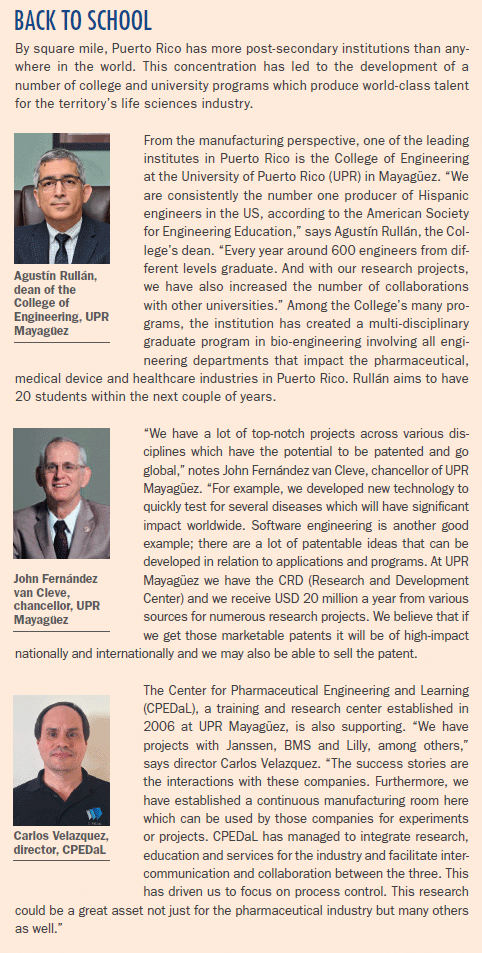
Back to School
The reliance of the industry on this ecosystem of service providers is paramount. Gustavo Hermida, president of local construction company CIC Construction Group explains: "As a general contractor, CIC provides the infrastructure for the life science sectors in the construction industry. Life science companies need the infrastructure built so they can produce their pharmaceuticals, biotechnology or medical devices," he says. "As a service provider of infrastructure, it is critical to gain the confidence of the industry, to show that you can provide the quality, performance and safety that they are looking for, at a competitive price." The company is the largest of its kind in Puerto Rico servicing the pharmaceutical, biotechnology, manufacturing and medical devices industry, and is the third largest general contractor in Puerto Rico. It is precisely this attention to the relationship between manufacturers and their service providers that has allowed companies like CIC to thrive.
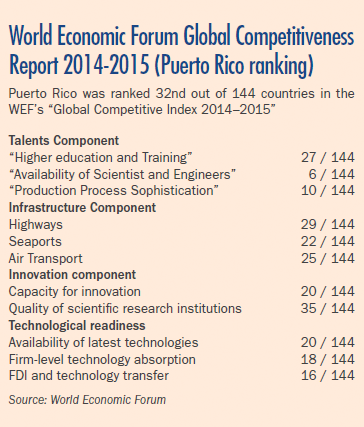
World Economic Forum Global Competitiveness Report 2014-2015 (Puerto Rico ranking)
M&N Electronics, for example, which distributes industrial doors for the life sciences industry such as cleanroom and stainless steel doors, distributes worldwide while controlling 60 percent of the Puerto Rican market share. Their clients include many familiar names, including Pfizer, BMS, Amgen, J&J, Medtronic, Novartis, Actavis/Allergan and Baxter.

Francisco García, executive director, PRMA
"Door installations are very critical here because of the nature of pharmaceutical production in Puerto Rico. Not everyone has access to such hi-tech doors," says Manuel De La Cruz, the company's president. M&N Electronics has grown organically: "We started in my father's house with two technicians and now have 45 employees in our facility and service Puerto Rico, the Dominican Republic, St. Thomas and St. Croix."
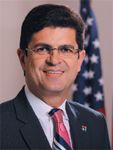
Frankie Chévere, executive director, Puerto Rico Trade & Export Company
TO THE CARIBBEAN AND BEYOND
Countless service providers to the life sciences industry of Puerto Rico are expanding their services to nearby countries in the Caribbean, Latin America and the US.
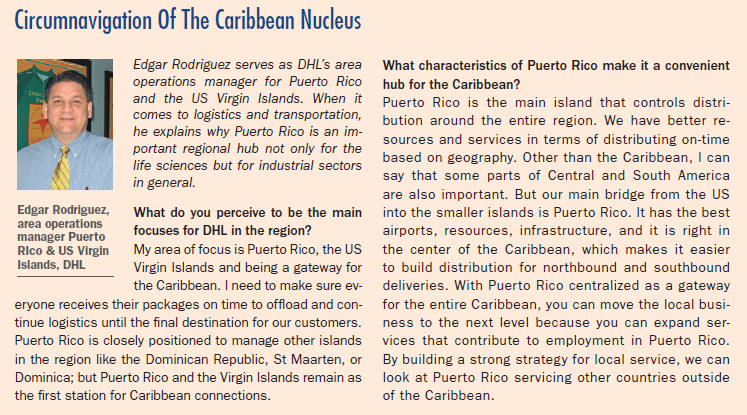
Circumnavigation Of The Caribbean Nucleus
"To continue growing we must expand outside Puerto Rico, particularly to the mainland US, which is a major point for us right now," says CIC Construction Group's Hermida. "We are in the process of obtaining the license to operate in North Carolina, and we are planning to open an office there early in 2016."

John Taboas, president, Biopharma Consulting Services
"Companies have to be able to appeal to multinationals' investments by strengthening their core competencies and outshining their competition on a global scale," explains Andy Vivoni, business development manager for local contract sterilization company Steri-Tech. "In today's game, the geographic barriers that existed in the past which restricted companies from transferring their operations are not present. Companies are now working on a multinational scale, outsourcing their operations to obtain the best cost-savings without sacrificing quality. Specialization has helped accelerate this trend, but the key element for us is differentiation. We have the basic infrastructure the industry needs but we have to offer the added value these companies desire."
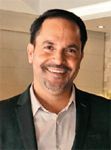
Néstor Cardona, president, N&CS Consulting Group
Steri-Tech is no stranger to working on this multinational scale. The company intends to outsource some of the products it currently resells from Asia and Latin America; "this would bring significant cost savings, compared to buying from secondhand suppliers in the US," comments Vivoni. "Eventually we can start branding our own products like our competitors do. The goal is to increase sales by penetrating new markets, both stateside and Latin America, where we see an increase in pharmaceutical and biotechnology activity, while decreasing purchasing costs, which translates into income."

David Lenihan, CEO, PHSU
"Exporting services to other life science hubs will encourage our service sector to grow while creating new markets for Puerto Rico. Working with academia to develop future professionals is also a great way of promoting growth," says Omar Muñiz, president of ShareTech Group, a local engineering, architecture, environmental consulting, and construction program management firm. The company also aims to target Puerto Rico's competitors in Ireland and Singapore. "It is fascinating to see how modern day information technology and globalization can facilitate and connect us, service providers, to our multinational clients' worldwide networks," remarks Muñiz.

Kenira Thompson, president, Ponce Research Institute
International expansion offers sizable opportunities for Puerto Rican companies. However, this must not be done in isolation. "Puerto Ricans should not think of their business as just part of an island; that is small thinking. We can broaden our collective mindsets," remarks Yoel Rivera, president of local packaging company Ultimate Solutions Corp. "But for some reason, we have been taught to work for other people and make their processes better rather than bringing our own systems and make them globally scalable. It is a mindset that must change in Puerto Rico." Rivera points out that some companies are trying to adopt this mindset, but that it must be developed much more in order to succeed. "We have great universities and key opinion leaders making great investigations, but for some reason we are just thinking about staying here locally," Rivera continues. "That is not how we can create a global business. I would like others to realize that they can dream about being more global; we have been doing this for 60 years. R&D in global companies brings us their processes and we improve them. The change needs to be that we create those processes or be part of them to make sure we are owners of that technology and those patents."
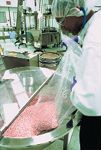
Inside iPR-AstraZeneca's facility in Canóvanas
"Every company has its own strategic plan but we in Puerto Rico should be seen as a world-class exporter of these services," says Edgar Torres, president of Escalate Sciences, a Puerto Rican specialized science-based consulting firm focused on R&D, tech transfer, process design & improvement, analytical development and characterization. "Most people know that consulting companies export qualification and validation, but with resources specialized in packaging, R&D, and many other areas in Puerto Rico, there will continue to be room for international growth. We have adapted to many needs in R&D; we can bring the right consulting resources with the right expertise to service different regions' specific needs."
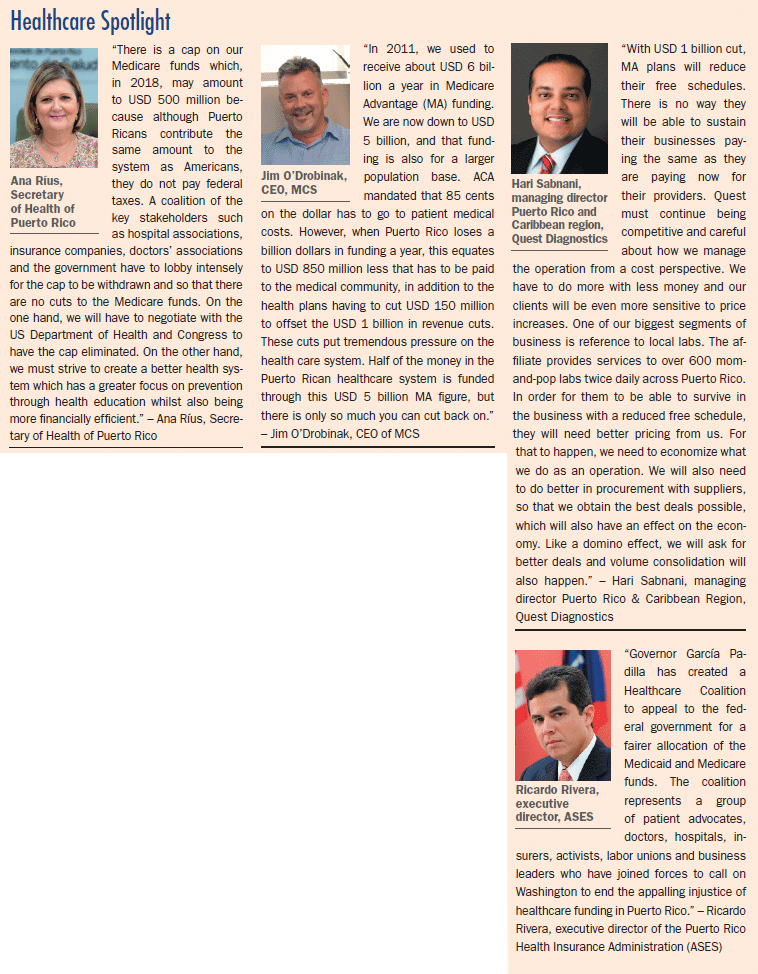
Healthcare Spotlight
"Companies have learned that they need to be very selective in their supply chain about who is supplying services and products," says Francisco García, the newly appointed executive director of PRMA. "Companies today have a lot more evaluation in their processes. That is an opportunity because many companies here have operations in other parts of the world so they are recommending suppliers here outside of Puerto Rico. Those companies can start exporting their services. That is a win-win situation; the clusters and their supply chains become very meaningful. The stronger the cluster, the stronger the interactions of the supply chain, the more experience you have internationally, and the better service you can get here."
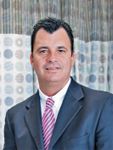
José Luis Rodríguez, CEO, Hospital Pavia Santurce
Frankie Chévere, executive director of the Puerto Rico Trade and Export Company (CCE), has been working to help merchants and small businesses become more competitive and foster an export culture.
The first law that Governor Alejandro García Padilla's signed in 2013 was the "Jobs Now Act" (Law 1), in which CCE played a pivotal role. "This law created a scheme of short-term incentives for companies to create jobs in Puerto Rico through tax exemptions, salary subsidies, and energy credits," Chévere says. "It aimed to give preferential treatment through those incentives to SMEs. Big companies, both local and foreign, also benefited. The new jobs in the health industry were in new diagnostic centers, services for the elderly, small pharmacies, and medical offices, all of which benefited from these incentives."
NEW BEGINNINGS
SMEs are making leaps and bounds, and new startups are still emerging in Puerto Rico. "We are starting to see a wave of new entrepreneurs and there are many entities in the ecosystem that are supporting entrepreneurship," continues PRMA's García. "It is being taught not only at the high school level but also at universities, making students aware that there is an opportunity to start your own company and that there is learning required for entrepreneurship." García acknowledges that Puerto Rico is becoming more sophisticated in that regard, and industry professionals are applying their experience to the life sciences cluster inside and outside Puerto Rico. "There is a large ecosystem trying to help people learn how to export, work outside Puerto Rico and how to manage that work," he says.
Take Biopharma Consulting Services (BCS) for example, which was founded in 2010 by John Taboas, an entrepreneur with expertise in validation. "A couple of years ago, we identified visual inspection as a sector in which other competitors were not paying attention," Taboas remarks. "BCS has managed to create expertise in that area. We have been working in projects on vision inspection in the US and Puerto Rico, including manual, semi-auto, and automated. We have FDA commitments related to vision inspections, new processes for new facilities that are already Pre-Approval Inspection (PAI)-approved."
"Through our years of experience on highly regulated environments such as Consent Decrees and constantly being watched by agencies, we have the expertise to provide excellent results in implementing and sustaining appropriate quality systems," Taboas says. "This is important both for keeping a high standard of manufacturing on the island and for emerging markets such as Latin America."
Also founded in 2010, N&CS Consulting Group, headed by president Néstor Cardona, specializes in performing validation GAP assessments to determine if life science companies' current processes and equipment are GMP-compliant. Cardona, an expert in computer systems validation, started the company as its sole employee. "We are now celebrating our fifth anniversary in 2015 and we are handling projects of about USD 5-6 million per year," he says. "We perform GAP assessments and recommend feasible solutions to the industry to improve their manufacturing processes. Our reputation has quickly grown throughout the country."
BI-CULTURAL SKILL SETS
At first glance, with only 800 students, Ponce Health Sciences University (PHSU) may seem like just another medical school in Puerto Rico. But upon closer inspection, one realizes that this university is a breeding ground for a new type of doctor altogether, one that is ready to cope with the changing dynamics of the US healthcare system.
Leading the charge is David Lenihan, CEO of PHSU. “North America is facing a cultural deficit in healthcare, and our unique health disparity research is a real asset for the US,” he says. “Despite the rapid increase in the Latino population, there is actually a decline per hundred thousand of Latino doctors. Such a decline affects not only the patient–doctor clinical reality but how a given disorder or disease is investigated.” Given that many diseases can be specific to certain genotypes and cultures, the research being done at PHSU is truly groundbreaking.
Take cancer for example. According to Kenira Thompson, president of the Ponce Research Institute, genetic ancestry studies have identified that breast cancer predisposition for Puerto Rican women is different from that of North American women of other ancestries. “Our Cancer Biology Division has spent many years identifying the genetic markers specific to Puerto Rican breast and skin cancer predisposition compared to other Hispanic and global populations,” Thompson remarks. “We have also identified low DNA repair capacity as an important risk for breast cancer in Puerto Rican women. Our current research sits at the forefront of precision medicine, which requires epidemiological, demographic, and genetic information to make the best therapeutic decision for each individual patient. These targeted treatments for specific populations are extremely important for patient outcomes and for reducing costs.”
PHSU’s groundbreaking work goes far beyond the research, however. The school is actively dedicating its curriculum to what Lenihan describes as “bicultural skill sets”, which are particularly important in Puerto Rico, the number one supplier of Latino doctors to the US. “Medical treatment for most patients tends to be the same, but the cultural handling of the patient – whom you talk to, physical contact with the patient, etc. – can be very different based on the patient’s background,” explains Lenihan. “PHSU produces doctors in Puerto Rico with the necessary levels of cultural competency to effectively manage this kind of situation, whereas the majority of US-trained doctors lack this skill.” These skills, which Lenihan views as a unique value proposition, will become necessary as the demographics of many states in the center of the US start to see an influx of Latinos, while the number of actual Latino doctors in these states remains negligible.
Lenihan, Thompson and the PHSU team hope to replicate this method of teaching in the US. “I hope to quadruple our research and to have interacted with at least ten health systems across the US during my tenure here,” says Lenihan. “These interactions with non-Puerto Rican health systems will contribute to a database on patients, in turn allowing us to apply for more basic science and clinical research grants that will provide a significant number of ROIs for Puerto Rico. I want medical students from other schools to come here to receive training that they would not receive in their home states.”
“The US needs this, and we can be number one in this niche,” he concludes. “Puerto Rico is the answer to many healthcare problems in the US. If managed correctly, this could bring Puerto Rico out of its economic crisis.”
BEYOND REGULAR TOURISM
As healthcare costs are on average 40 percent cheaper in Puerto Rico compared to the mainland US, the island offers plenty of opportunities for treating patients from the US as well as patients in the Caribbean. Puerto Rico's healthcare infrastructure is the best among its neighbors. Between 15,000 and 20,000 patients visit Puerto Rico every year and spend on average USD 10,000 in medical costs. Puerto Rico's newly established Medical Tourism Corporation aims to increase that figure in the coming years.
"Many people come to Puerto Rico for complex surgeries, such as open heart, orthopedics, dental, or plastic surgeries," says José Luis Rodríguez, CEO of Hospital Pavia's Santurce division. "We believe we can attract patients because we speak their language and have the same judiciary system, and these characteristics can give peace of mind for the patients. It is much better than going to another country." Metro Pavia, which has been operating one of the largest hospital networks in Puerto Rico and the Virgin Islands for 20 years, runs 12 different hospitals, each with its own specialty; such as the Santurce branch, which has expertise in cardiovascular treatments. "Besides medical tourism we are also providing emergency services for those in need in other countries," continues Rodríguez. "The government of Puerto Rico is betting on that and building more facilities for these patients."
MADE IN PUERTO RICO
"Industry is not a collection of machines and tools and buildings. It is a social entity that has the responsibility of realizing the happiness of those who work in it," said Luis A. Ferré, Third Governor of Puerto Rico in May 1962.
Despite the economic situation, the strength of Puerto Rico's manufacturing sector in life sciences and beyond will play a critical role at this point of the island's development. "This country has realized that it cannot continue to depend on others," declares PRMA's Carlos Rivera. "It is our charter to grow our country, and therefore we must be present in every aspect of promoting Puerto Rico. Puerto Rico has been in a recession for seven years, with negative growth. We need to do something about it on as many fronts as possible: working with Washington, working on exports, generating new jobs, government buying in Puerto Rico, and generating more domestic capital. Only Puerto Ricans can turn this country around. People have become conscious of this and everybody is fighting for it."
